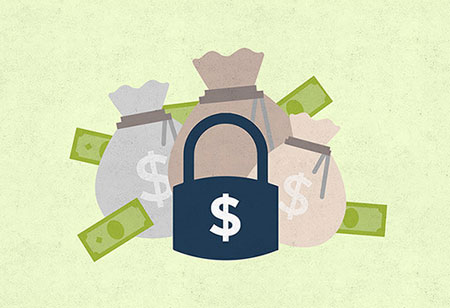THANK YOU FOR SUBSCRIBING
Be first to read the latest tech news, Industry Leader's Insights, and CIO interviews of medium and large enterprises exclusively from CFO Tech Outlook
THANK YOU FOR SUBSCRIBING

By
CFO Tech Outlook | Tuesday, January 29, 2019
Stay ahead of the industry with exclusive feature stories on the top companies, expert insights and the latest news delivered straight to your inbox. Subscribe today.
Financial planning is always stressful. Perhaps palling is the only way that can neutralize the impact of various financial problems. Financial Planning improves every aspect of a person’s financial life like taxation, insurance, and achievement of goals. Instructions to draw a financial plan
Create a budget plan
The budget should cover three major aspects of expenditure. They are
• Budget to achieve daily financial goals
• A budget to achieve financial goals within three to five years
• A budget to achieve financial goals that may take five or more years
Creating such plan and sticking to it will show a transparent picture of a person’s financial status. After expenditure, a person should concentrate on savings like Freedom fund (after retirement fund). If you can't commit the amount you need, including the "Save More Tomorrow" plan, that will help you ease into the number you need to be saving every month.
Check Out This: Top fintech companies , Utilities Business Review
Winnable plan
Most people make a mistake by creating a figure that feels impossible to achieve, so they delay starting their saving and investing. Spending habits should be monitored and how you can speed up your plan to achieve financial freedom faster-from limiting your daily impulse purchases like tea, alcohol and fast food which will, in turn, lead to reducing your taxes, earning more, relocating, and improving your lifestyle. There are lots of ways on how to achieve your desired financial outcomes faster.
Prioritize
A Goal needs to be prioritized and quantified to make it more achievable. A person has to make a list of his/her goals based on their own financial information.
Prioritization is required because a person might need to pay off a credit card debt, save for emergency fund, save for retirement, buy a new house, and also create an annual travel budget; all of this may not be possible at once.
To achieve goals, there is a need for drawing a budget plan that takes all the expenses into account. Then budget of not more than fifty percent should be spent on essential living expenses like housing, utilities, transportation, and groceries. Twenty percent of income should be spent on retirement planning and emergency fund, finally not more than thirty percent of income should be spent on shopping, clothing, and entertainment.
Automate
After having a clear picture of expenses, then one can decide the amount of income left to put aside into savings and retirement. Now that amount should be automatically deducted into a separate account. Most banks have automated payment systems that you can use to completely automate your financial life. Setting up payments at regular intervals will not only take off the mental burden and keep you on track but will also help smooth out your cash flow.
Checking progress
The biggest regret of a financial plan is not starting early enough and the solution is to start today. The plan should enable an individual to save at least fifteen times to his/her annual income. If you're managing your plan on your own, you need to be aware of the course.
Check Out:- The Manufacturing Outlook , Food Business Review
I agree We use cookies on this website to enhance your user experience. By clicking any link on this page you are giving your consent for us to set cookies. More info

However, if you would like to share the information in this article, you may use the link below:
www.cfotechoutlookapac.com/news/simple-financial-steps-to-achieve-financial-security-nid-388.html



